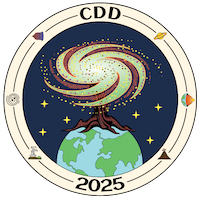Orateur
Description
The composition of the Earth's atmosphere is an archive of the geological history of our planet. Noble gases are excellent tracers of processes like atmospheric escape, mantle outgassing, allowing estimates of Earth's ancient geodynamics [1,2]. For example, the atmospheric 20Ne/22Ne ratio has evolved through degassing of solar neon from the mantle in an originally chondritic atmosphere [3,4,5]. Thus, measuring the isotopic composition of paleo-atmospheric Ne offers a new method for estimating the outgassing history of the Earth's mantle. Recently, a model published by [3] proposed a 20Ne/22Ne ratio of 9.75 at 3.3 Ga, <1% lower than the modern one (9.808). Atmospheric xenon has also undergone significant changes since the Archean. The modern atmosphere is mass-dependent fractionated relative to the Archean atmosphere, with an enrichment in heavy isotopes and a depletion of the light ones. Another Xe feature of the modern atmosphere is its elemental depletion relative to cosmochemical references. This Xe paradox can be explained by a specific atmospheric escape of ionized Xe over time, inducing a Xe-rich atmosphere in the Archean and thus an evolution of the 130Xe/84Kr elemental ratio over time [6]. Thus, measuring this elemental ratio in the Archean atmosphere can provide strong evidence of this scenario.
Some hydrothermal quartz sampled ancient atmospheric components during their formation [7,8]. The atmospheric signal is never pure and reflects a mixture between paleo-atmospheric gases and noble gas isotopes produced in the crust. In this study we measured the elemental and isotopic composition of noble gases released from fluid inclusions trapped in Archean hydrothermal quartz (2.7 Ga-old, Fortescue Group in Australia; 3.3 Ga-old, Barberton in South Africa) to derive an Archean atmospheric 20Ne/22Ne ratio and a Xe/Kr ratio. Noble gases have been released by step-crushing, purified and measured using a Noblesse mass spectrometer.
Ne released from ancient quartz defines two distinct mixtures between an atmospheric component and nucleogenic Ne produced in the crust, with high 21Ne/22Ne ratios (up to 0.0717 ± 0.0014 1σ). The mixing line allows us to derive a 20Ne/22Ne ratio between 9.808 and 9.815 at 3.3 Ga and between 9.766 and 9.808 at 2.7 Ga has been retrieved (at 21Ne/22Ne=0.029). These results suggest that a modern-like value was already reached 3.3 Ga-ago, arguing for a strong outgassing activity of the mantle in the first billion year of Earth's geodynamical history.
The mixture between paleo-atmospheric Xe and Xe produced in the crust, allows us to determine a 130Xe/84Kr ratio at 3.3 Ga of 2.2 times the modern one, consistent with an enrichment in Xe during the Archean compared to the modern atmosphere.
[1] Catling & Kasting (2017) Atm. evol. on inhabited and lifeless worlds. Cambridge Univ. Press. [2] Ozima & Podosek (2002) Noble Gas Geochem. Cambridge Univ. Press. [3] Zhang et al. (2023) EPSL 609, 118083. [4] Marty et al. (2012) EPSL 313-314, 56-66. [5] Marty et al. (2022) Icarus 381, 115020. [6] Zahnle et al. (2019) GCA 244, 56-85. [7] Pujol et al. (2011) EPSL 308, 298-306. [8] Avice et al. (2023) EPSL 620.
| Speaker information | PhD 2nd year |
|---|

